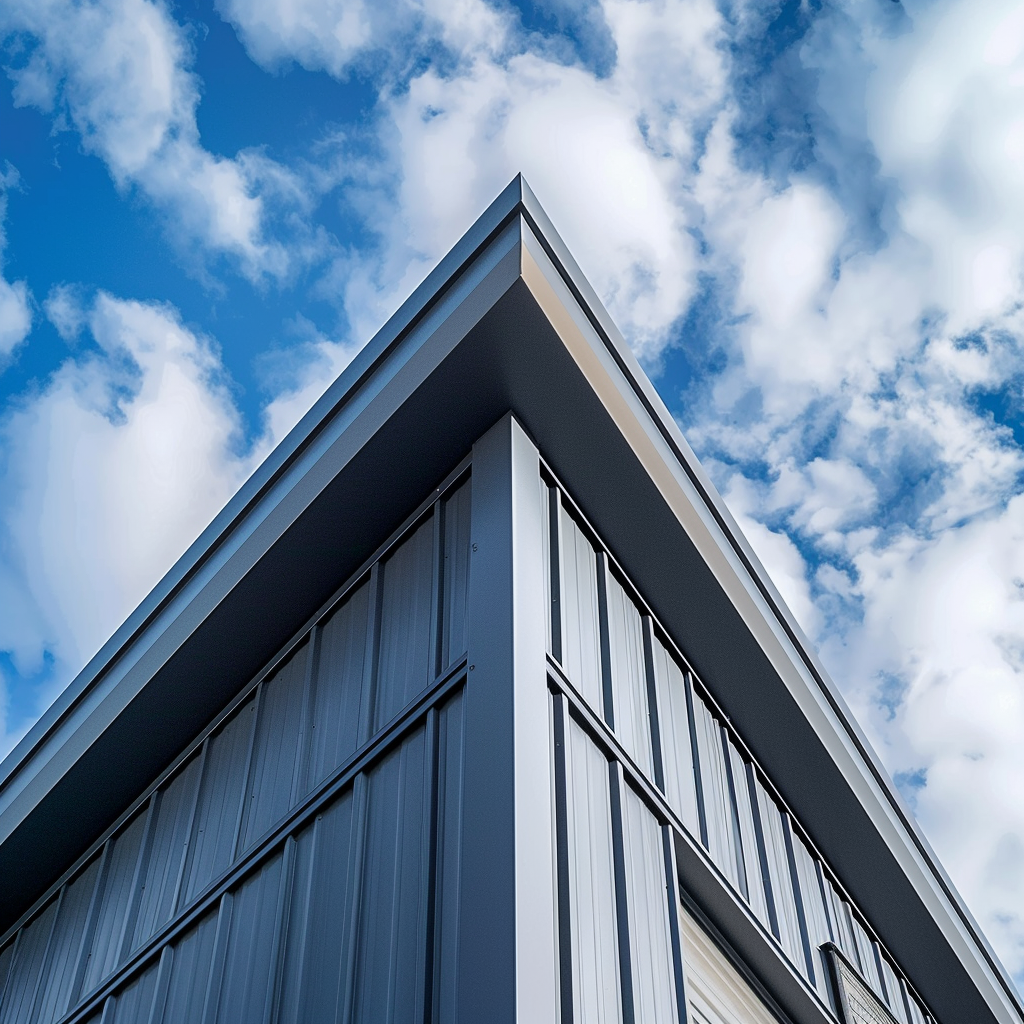
In my journey through the world of modern construction, I’ve come to realize the critical role that metal building trim plays in enhancing both the aesthetic appeal and structural integrity of our projects. At MBMI Metal Buildings, we prioritize integrating high-quality base trim into our designs, ensuring each structure not only boasts a polished appearance but is also fortified against various environmental challenges.
In my work, I’ve learned that metal building trim is more than just a finishing touch; it’s an essential component that seals the gaps between panels and at edges, corners, eaves, and bases. This not only enhances the building’s appearance but also plays a crucial role in weatherproofing and insulating the structure.
Through projects at MBMI, I’ve seen firsthand how well-designed trim can prevent water infiltration—arguably one of the biggest threats to any structure. It directs water away from seams and joints, safeguarding against leaks that could compromise the building’s integrity over time.
By understanding what metal building trim is and recognizing its significance in construction, we’re better equipped to make informed decisions about our projects. It’s clear that this element of design isn’t merely decorative—it’s fundamentally protective.
In my experience, the quality of trim used in metal buildings cannot be overstated. High-quality trim acts as a first line of defense against harsh weather conditions. It ensures that rain, snow, and wind do not penetrate the building’s envelope, preserving its structural integrity and interior comfort.
Working with MBMI has taught me that investing in premium metal building trim pays off in longevity. Quality materials resist corrosion, fading, and wear over time. This durability means less maintenance and replacement costs down the line—a crucial consideration for any project budget.
Quality trim also contributes significantly to a building’s overall strength. Properly installed and sealed trim supports the panels it adjoins, reinforcing connections at potentially weak points where elements might otherwise find an entryway.
Understanding these aspects has been pivotal; it’s clear that quality trim is integral not just for aesthetics but for ensuring a metal building stands strong against whatever challenges come its way.
In my projects, I’ve frequently turned to base trim for its seamless integration at the foundation of metal buildings. This type not only enhances the visual appeal by providing a clean finish but also plays a critical role in sealing off the bottom edges against pests and moisture ingress.
The corner trim has been indispensable in creating sharp, defined lines along building corners. It’s more than just an aesthetic choice; it strengthens the structure’s integrity at these pivotal points, ensuring durability and resistance to weather impacts.
Utilizing eave trim in our designs helps guide water runoff away from the building, preventing potential damage from water accumulation. Its design complements both functionality and aesthetics, adding a polished look while contributing to effective water management systems.
Atop every metal roof lies ridge cap trim, which I’ve found crucial for bridging gaps between roofing panels at their apex. This ensures a watertight seal that protects against leaks during heavy rains—a common challenge we prepare for in many of our constructions.
Each type of trim MBMI offers serves specific functions that collectively enhance a building’s performance and appearance. My experience has shown me how vital these elements are to any successful construction project—they’re not merely decorative but integral components that ensure longevity and efficiency.
From my own projects, I’ve seen how base trim creates a critical barrier between the building and ground moisture. This additional layer of defense is essential in preventing water damage and corrosion at the structure’s foundation—a key factor for durability in varying climates.
Base trim also significantly boosts a building’s visual appeal. It provides a clean, finished look that hides unsightly gaps between the base of the wall panels and the foundation. In my designs, this detail often makes all the difference, transforming industrial spaces into sleek structures.
One aspect I particularly appreciate about using MBMI’s base trim is its ease of installation. The design allows for quick attachment without needing extensive modifications or complex procedures—saving time and reducing labor costs on site.
Incorporating base trim has proven to be beneficial not only for enhancing structural integrity but also for elevating aesthetic qualities and streamlining construction processes. My experience underscores its value as an indispensable component in modern metal building projects.
In my experience, understanding the local climate is paramount when selecting trim for a metal building. Areas prone to heavy rain or snow require trims that offer superior water runoff capabilities, such as eave and ridge cap trims. Conversely, in dryer climates, focusing on UV-resistant materials can prolong the lifespan of your trim.
The function of your building also plays a crucial role in trim selection. For instance, agricultural buildings benefit from base trim that provides additional protection against pests and moisture. Meanwhile, commercial spaces might prioritize aesthetic aspects like custom-colored corner trims to match brand identity.
Finally, personal or corporate aesthetic preferences should guide the choice of trim style and color. MBMI offers customization options that allow me to tailor designs according to specific visual themes or architectural requirements—ensuring each project not only performs well but looks great too.
Our engineers are happy to help you customize your building. You can also use our 3D designer and even get a price quote straight from our site. Contact us today for more information.